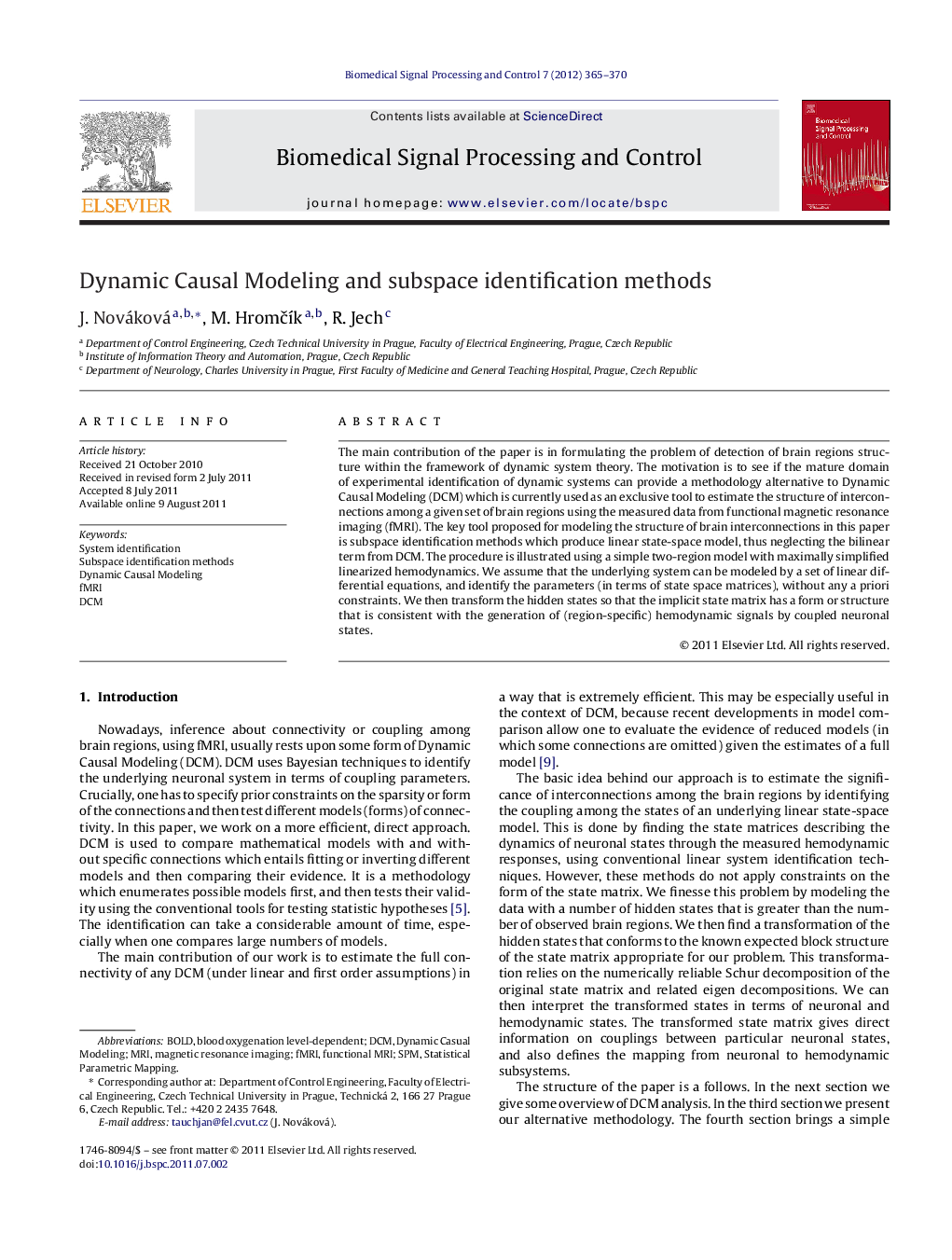| Article ID | Journal | Published Year | Pages | File Type |
|---|---|---|---|---|
| 558191 | Biomedical Signal Processing and Control | 2012 | 6 Pages |
The main contribution of the paper is in formulating the problem of detection of brain regions structure within the framework of dynamic system theory. The motivation is to see if the mature domain of experimental identification of dynamic systems can provide a methodology alternative to Dynamic Causal Modeling (DCM) which is currently used as an exclusive tool to estimate the structure of interconnections among a given set of brain regions using the measured data from functional magnetic resonance imaging (fMRI). The key tool proposed for modeling the structure of brain interconnections in this paper is subspace identification methods which produce linear state-space model, thus neglecting the bilinear term from DCM. The procedure is illustrated using a simple two-region model with maximally simplified linearized hemodynamics. We assume that the underlying system can be modeled by a set of linear differential equations, and identify the parameters (in terms of state space matrices), without any a priori constraints. We then transform the hidden states so that the implicit state matrix has a form or structure that is consistent with the generation of (region-specific) hemodynamic signals by coupled neuronal states.
► Identification techniques are used for fMRI data fitting. ► They are a promising alternative to DCM for brain areas structure detection. ► The paper includes practical examples with subspace identification methods using.
